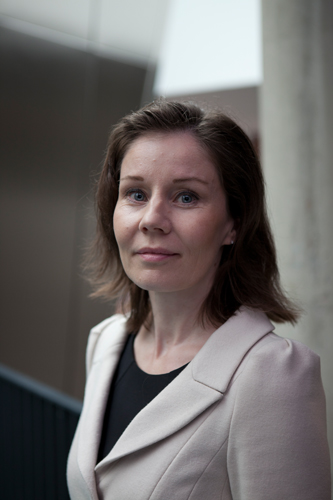InstituteQ - The Finnish Quantum Institute (external link)
InstituteQ coordinates quantum research, education, and business in Finland

Much of modern life depends on the coding of information onto means of delivering it. A common method is to encode data in laser light and send it through optic cables. The increasing demand for more information capacity demands that we constantly find better ways of encoding it.
Researchers at Aalto University’s Department of Applied Physics found a new way to create tiny hurricanes of light — known to scientists as vortices — that can carry information. The method is based on manipulating metallic nanoparticles that interact with an electric field. The design method, belonging to a class of geometries known as quasicrystals, was theoretically developed by Kristian Arjas, a Doctoral Researcher in Professor Päivi Törmä’s Quantum Dynamics group, and experimentally realized by another Doctoral Researcher from the group, Jani Taskinen. The discovery represents a fundamental step forward in physics and carries the potential for entirely new ways of transmitting information.
A vortex is in this case like a hurricane that occurs in a beam of light, where a calm and dark centre is surrounded by a ring of bright light. Just like the eye of a hurricane is calm due to the winds around it blowing in different directions, the eye of the vortex is dark due to the electric field of bright light pointing to different directions on different sides of the beam.
Previous physics research has connected what kind of vortices can appear with how much symmetry there is in the structure that produces them. For example, if particles in the nanoscale are arranged in squares the produced light has a single vortex; hexagons produce a double vortex and so on. More complex vortices require at least octagonal shapes.
Now Arjas, Taskinen and the team unlocked a method for creating geometric shapes that theoretically support any kind of vortex.
“This research is on the relationship between the symmetry and the rotationality of the vortex, i.e. what kinds of vortices can we generate with what kinds of symmetries. Our quasicrystal design is halfway between order and chaos,” Törmä says.

In their study, the group manipulated 100,000 metallic nanoparticles, each roughly the size of a hundredth of a single strand of human hair, to create their unique design. The key lay in finding where the particles interacted with the desired electric field the least instead of the most.
‘An electrical field has hotspots of high vibration and spots where it is essentially dead. We introduced particles into the dead spots, which shut down everything else and allowed us to select the field with the most interesting properties for applications,’ Taskinen says.
The discovery opens a wealth of future research in the very active field of topological study of light. It also represents the early steps for a powerful way of transmitting information in domains where light is needed to send encoded information, including telecommunications.
‘We could, for example, send these vortices down optic fibre cables and unpack them at the destination. This would allow us to store our information into a much smaller space and transmit more information at once. An optimistic guess for how much would be 8 to 16 times the information we can now deliver over optic fibre,’ Arjas says.
While practical applications and scalability for this discovery are likely to take years of engineering, the Quantum Dynamics group at Aalto has plenty on their plate, including research into superconductivity and improving organic LEDs.
The group used the OtaNano research infrastructure for nano-, micro- and quantum technologies in their pioneering study.
The research was published early November in Nature Communications: https://www.nature.com/articles/s41467-024-53952-5



InstituteQ coordinates quantum research, education, and business in Finland

OtaNano is Finland's national research infrastructure for micro-, nano-, and quantum technologies



